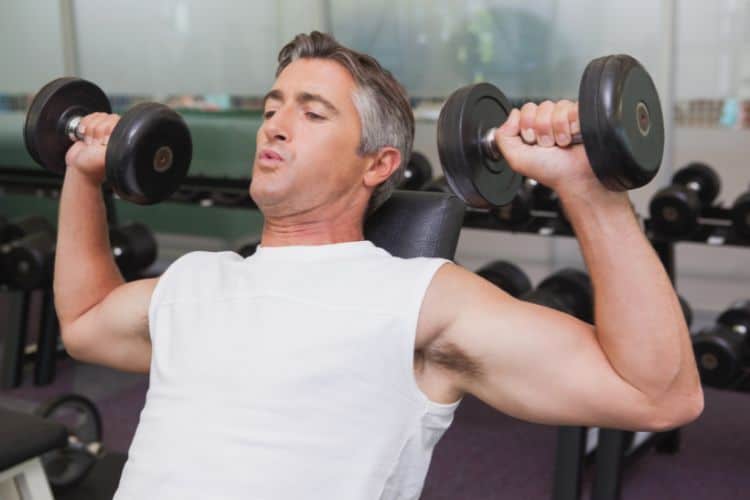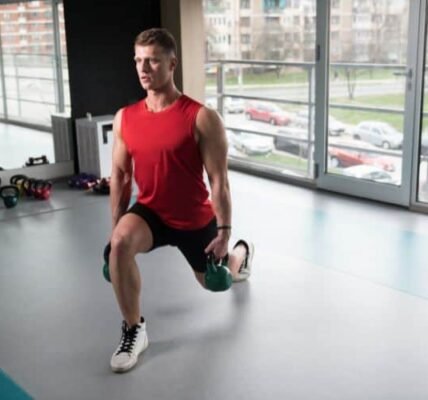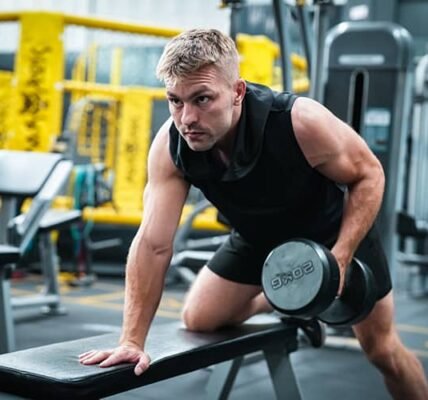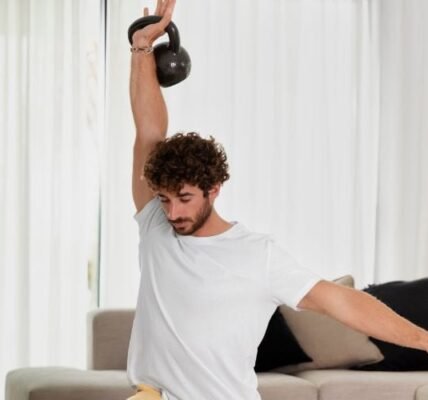
Aging doesn’t mean slowing down—it means adapting and staying consistent. Once you pass 50, maintaining an active lifestyle becomes essential for longevity, mobility, and quality of life. Regular workouts to stay fit after 50 can help manage weight, reduce the risk of chronic diseases, boost mood, and maintain muscle mass. But fitness after 50 isn’t about pushing your limits—it’s about training smarter, not harder.
Key Benefits of Workout And Getting Fit After 50
- Preserves muscle mass and bone density
- Improves heart health and circulation
- Boosts mood and cognitive function
- Enhances flexibility and balance
- Supports healthy weight management
Let’s explore the best types of workouts and how to structure a fitness plan that helps you thrive in your 50s and beyond.
Best Types of Workouts for People To Get Fit After 50
1. Strength Training
Strength training helps combat age-related muscle loss (sarcopenia). It’s also essential for bone density, especially for women post-menopause.
Top Strength Exercises for Over 50:
- Bodyweight squats or chair squats
- Wall push-ups or modified push-ups
- Dumbbell deadlifts
- Resistance band rows
- Seated overhead press
- Step-ups with or without weights
Frequency: 2–3 times per week with rest days in between.
2. Cardiovascular Workouts To Get Fit After 50
Cardio keeps your heart healthy and supports fat burning.
Joint-Friendly Cardio Options:
- Brisk walking
- Cycling (indoor or outdoor)
- Low-impact aerobics
- Swimming or aqua jogging
- Elliptical machine
Duration: Aim for 150 minutes of moderate-intensity cardio per week.
3. Flexibility and Mobility
Staying limber helps reduce injury risk and makes daily movements easier.
Best Flexibility Exercises:
- Dynamic warm-ups (leg swings, arm circles)
- Yoga for seniors
- Tai Chi
- Static stretches post-workout
- Foam rolling and light mobility drills
Routine: Stretch after each workout and dedicate at least one session weekly to mobility.
4. Balance and Core Training Workout To Get Fit After 50
Falls become a greater risk with age. Balance training improves stability and reduces the chance of injury.
Balance Exercises to Include:
- Single-leg stands
- Heel-to-toe walks
- Stability ball exercises
- Core planks (modified if needed)
- Standing marches
Weekly Fit After 50 Workout Plan (Sample)
Here’s a balanced weekly plan that combines strength, cardio, and recovery.
| Day | Focus | Description |
|---|---|---|
| Monday | Strength | Full-body resistance training |
| Tuesday | Cardio | 30-minute brisk walk or cycling |
| Wednesday | Flexibility & Core | Yoga and core exercises |
| Thursday | Strength | Upper-body strength workout |
| Friday | Cardio | Swimming or elliptical session |
| Saturday | Balance & Mobility | Balance drills and stretching |
| Sunday | Rest | Active recovery or complete rest |
Full-Body Strength Workout for 50+To Get Fit
This 30-minute workout targets major muscle groups with minimal impact on joints.
Warm-Up (5 Minutes)
- March in place (1 min)
- Arm swings and shoulder circles (1 min)
- Leg swings (1 min each side)
- Gentle squats (10 reps)
Main Workout (Perform 2-3 sets of each)
- Chair Squats – 10–12 reps
- Incline Push-Ups (wall or bench) – 8–10 reps
- Dumbbell Deadlifts – 10 reps
- Seated Shoulder Press – 8–10 reps
- Resistance Band Rows – 10–12 reps
- Standing Calf Raises – 15 reps
- Bird-Dog (for core) – 8 reps per side
Cool Down (5 Minutes)
- Gentle stretching for hamstrings, hips, shoulders, and neck
- Deep breathing exercises to lower your heart rate
Tips for Safe and Effective Workouts To Get Fit After 50
1. Listen to Your Body
Joint stiffness or mild soreness is normal—but pain is not. Learn to distinguish between the two and rest when needed.
2. Focus on Proper Form
Good technique protects your joints and muscles. If you’re unsure about form, consider working with a certified personal trainer who specializes in older adults.
3. Modify When Needed
Don’t be afraid to adjust exercises to suit your current fitness level. Use resistance bands instead of heavy weights, or swap high-impact moves for low-impact alternatives.
4. Stay Consistent
Consistency beats intensity. It’s better to work out 3–4 times a week regularly than push too hard and burn out or risk injury.
5. Fuel Your Body
Eat a balanced diet rich in protein, healthy fats, and complex carbs. Adequate protein supports muscle repair and growth, especially after resistance training.
Best Workout Equipment for Over 50 Fitness at Home To Get Fit
You don’t need a gym to stay fit after 50. A few tools at home can make all the difference:
- Dumbbells (light to moderate weight)
- Resistance bands
- Yoga mat
- Stability ball
- Foam roller
- Step platform or sturdy bench
These pieces of equipment are low-impact, joint-friendly, and perfect for creating a well-rounded home workout routine.
Fit After 50 Workout for Women: Special Considerations
1. Bone Health and Osteoporosis
Women, especially post-menopause, are at higher risk of osteoporosis. Weight-bearing exercises like squats, walking, and resistance training help strengthen bones.
2. Hormonal Balance and Weight Gain
Hormonal changes may contribute to abdominal weight gain. Combine strength training, HIIT, and nutrition to manage your weight effectively.
3. Emotional Well-Being
Exercise can ease symptoms of menopause like mood swings and sleep disturbances. Activities like yoga and walking outdoors can significantly boost mental health.
Fit After 50 Workout for Men: Special Considerations
1. Muscle Maintenance and Testosterone
After 50, testosterone levels decline, leading to reduced muscle mass. Resistance training helps counteract this process and maintains strength and energy.
2. Heart Health
Men over 50 are at greater risk for cardiovascular issues. Consistent cardio combined with a heart-healthy diet is essential.
3. Functional Fitness
Focus on exercises that mimic everyday movements—like squats, lunges, and rows—to enhance mobility, posture, and independence as you age.
Overcoming Common Challenges To Workout After 50 And Getting Fit
1. Joint Pain
Use low-impact exercises like swimming, cycling, or bodyweight movements. Strengthen supporting muscles to reduce joint strain.
2. Time Constraints
Even 15-minute workouts can be effective. Focus on compound movements that work multiple muscle groups at once.
3. Motivation Slumps
Join group fitness classes or follow a program to stay accountable. Tracking progress also helps maintain momentum.
Supplements and Recovery for Over 50
Supporting your workouts with smart nutrition and recovery is key.
Helpful Supplements (consult your doctor first):
- Vitamin D and Calcium for bone health
- Omega-3s for joint health
- Protein supplements (whey or plant-based)
- Magnesium for muscle recovery
- Collagen for joints and skin
Recovery Tips:
- Prioritize 7–8 hours of sleep
- Hydrate adequately
- Stretch regularly
- Use heat/cold therapy when needed
Long-Term Workout Fitness Goals To Get Fit After 50
Being fit after 50 isn’t just about looks—it’s about quality of life.
Set these long-term goals:
- Maintain independence
- Stay active with grandkids or hobbies
- Prevent falls and injuries
- Improve energy and mood
- Manage stress and chronic conditions
By focusing on sustainable habits, you can enjoy a vibrant, healthy life well into your 60s, 70s, and beyond.
Getting fit after 50 isn’t just possible—it’s empowering. With the right workouts, mindset, and consistency, you can build strength, protect your health, and feel confident in your body.
Whether you’re starting from scratch or picking up where you left off, there’s no better time than now. Adjust your routines to suit your body’s needs, fuel yourself with nutritious food, and stay committed to the journey.





